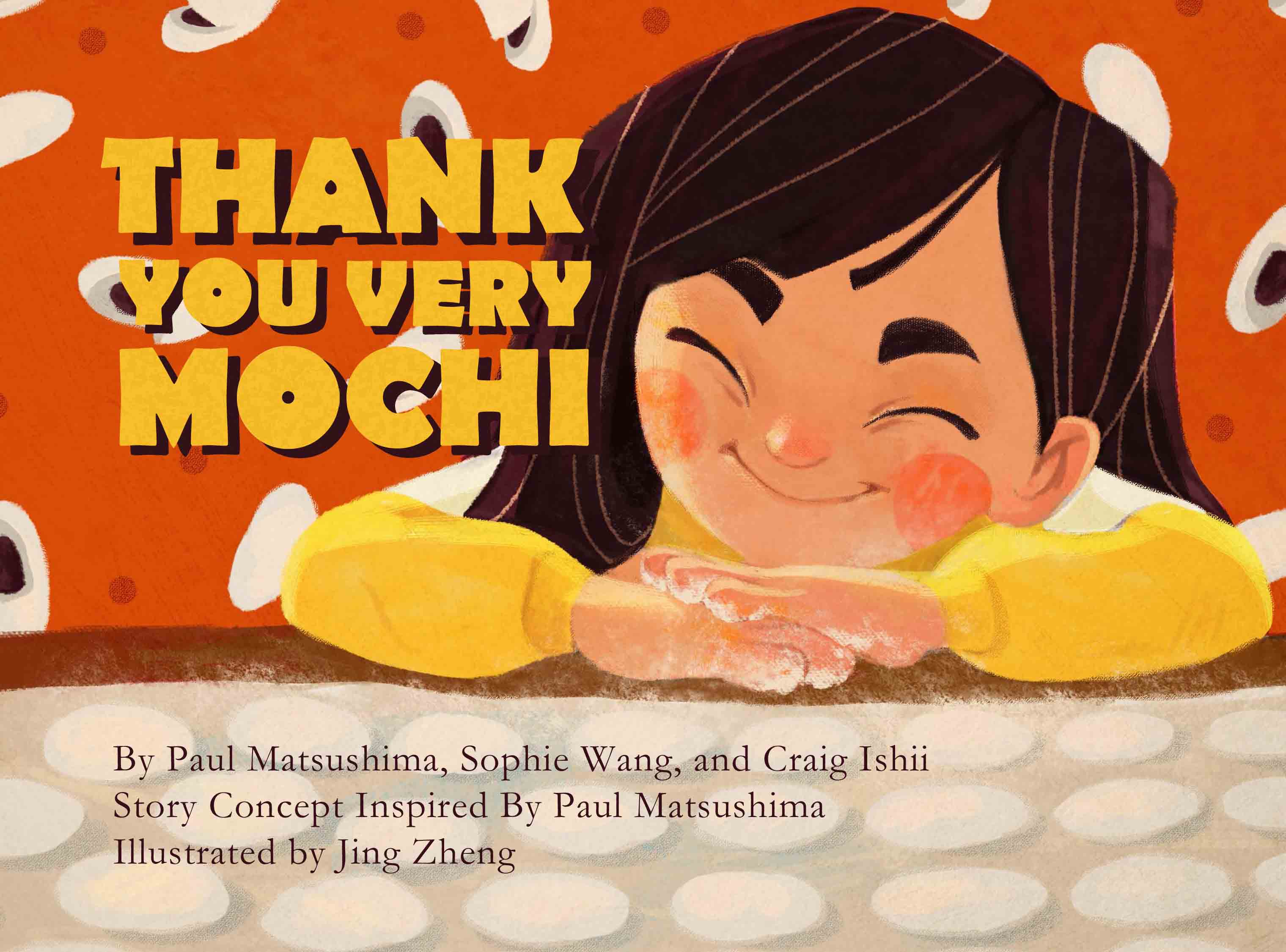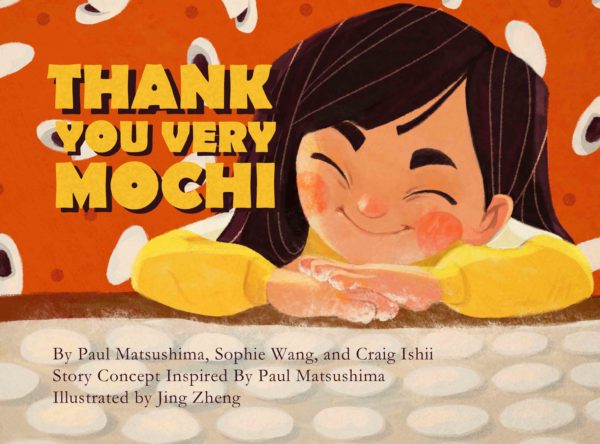
What’s the book about?
When Kimi and her family visit Grandma and Grandpa’s house for New Year’s mochitsuki, they discover the mochi-machine is broken. After initial fears that mochitsuki will be cancelled, Grandpa proposes an interesting, yet old-fashioned solution of making mochi the hand-pounded way.
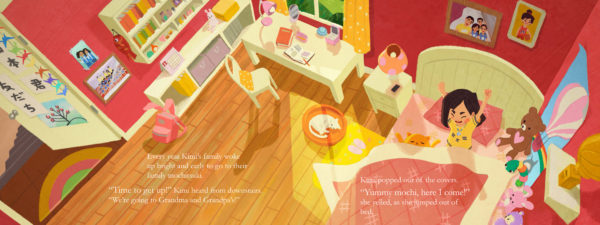
What exactly is mochitsuki?
Mochitsuki, or pounding rice to make mochi (rice cakes), is an important traditional event in preparation for the New Year in Japan. (Source)
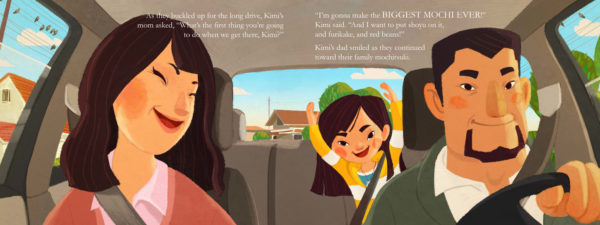
My Thoughts…
Raising an Asian American kid takes some thought. I want him to be proud of who he is and where his ancestors come from. But in the Japanese American community, that can be a bit tougher than some other ethnicities. During World War II, Japanese Americans were made to choose between being Japanese and being American. Most chose to be American. And the “lesson” the community learned from the experience was to blend in—not to speak Japanese, not to live in Japanese communities, etc. In other words, to be as “American” as possible. Because of that, there has in the past—less now—been a shunning of all things seen as too Japanese in the community.
This is why books like Thank You Very Mochi are important for Japanese American families like mine. It connects our culture and American heritages. It allows us to teach and celebrate who we are and our experiences. And it puts people who look like us in the center of the story… as opposed to one of the faces in a crowd. The first time my five-year-old read the book, he told me, “they look like us.” (On a side note, this was an interesting comment since we’ve read children’s books before that featured Asian and Japanese Americans before).
In fact, my son was so proud of the book he wanted to bring it to his pre-school. It was during a unit where they were studying traditions. Even though, we as a family don’t have a mochitsuki tradition, he wanted to share it with his friends. His classmates enjoyed the story and even got to taste some yummy mochi from Fugetsudo. The part of the reading that warmed my heart the most though was when we got to the pages that had images from the Japanese American “camps” during World War II. Because my son and I ALWAYS talk about them, he kept wanting to tell his little friends about them too. However, since the kids were only four and five, I didn’t think it was appropriate topic for me to bring up; so I told my son that we shouldn’t discuss this then and there. (It should be noted that if you prefer not to talk about the “camps,” they are not mentioned explicitly. However, if you do, there are images that depict “camp” life and can lead to interesting conversations about them.)
I realized I wrote this entire review and haven’t mentioned what I thought of the actual contents. I love the writing and the pictures. And more importantly, my kid loves it too. Get a copy of it right away or as a Christmas present for the Asian/Japanese American kid in your life.
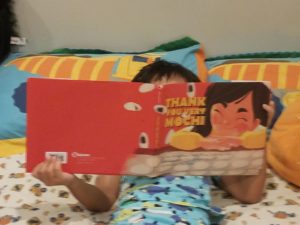
One last thing, I would like to shout out the folks who put out the book: Kizuna. They are a Japanese American non-profit who are trying to connect culture with the next generation. I think they are an organization worth knowing about. To find out more, go to their website here.
Be sure to follow me on Twitter @ksakai1
